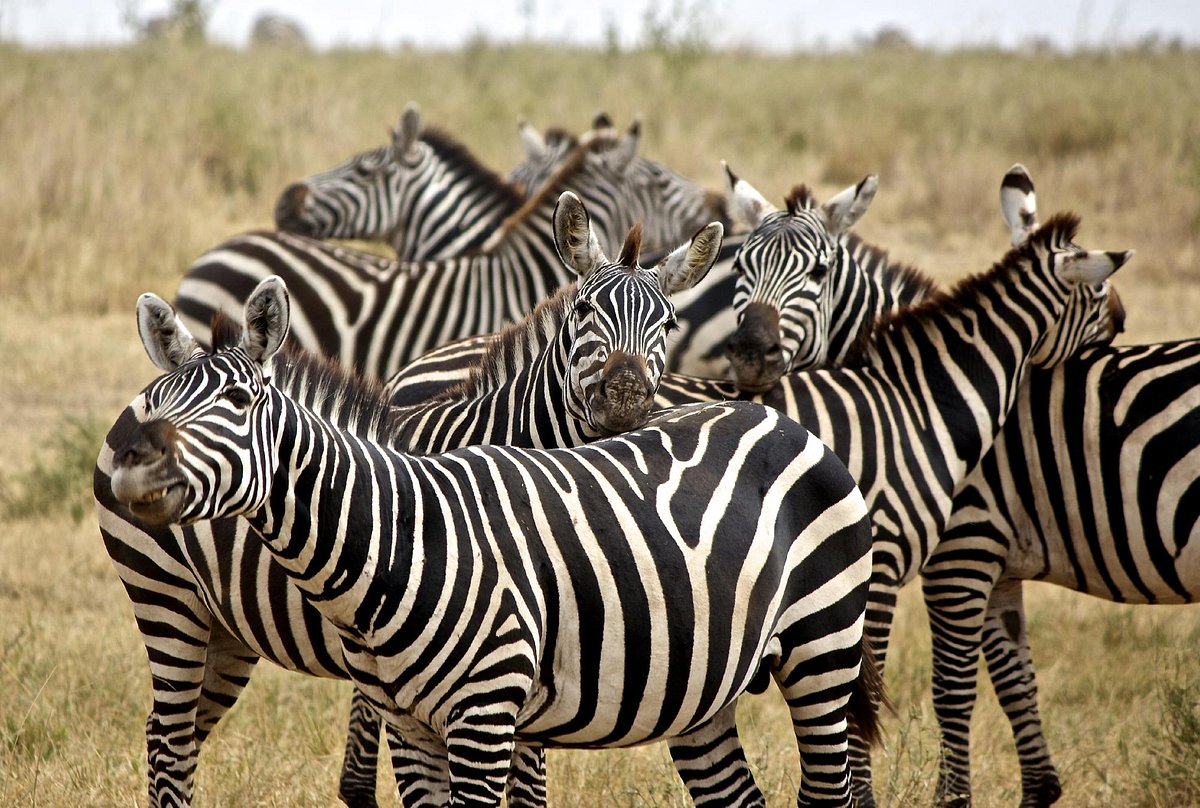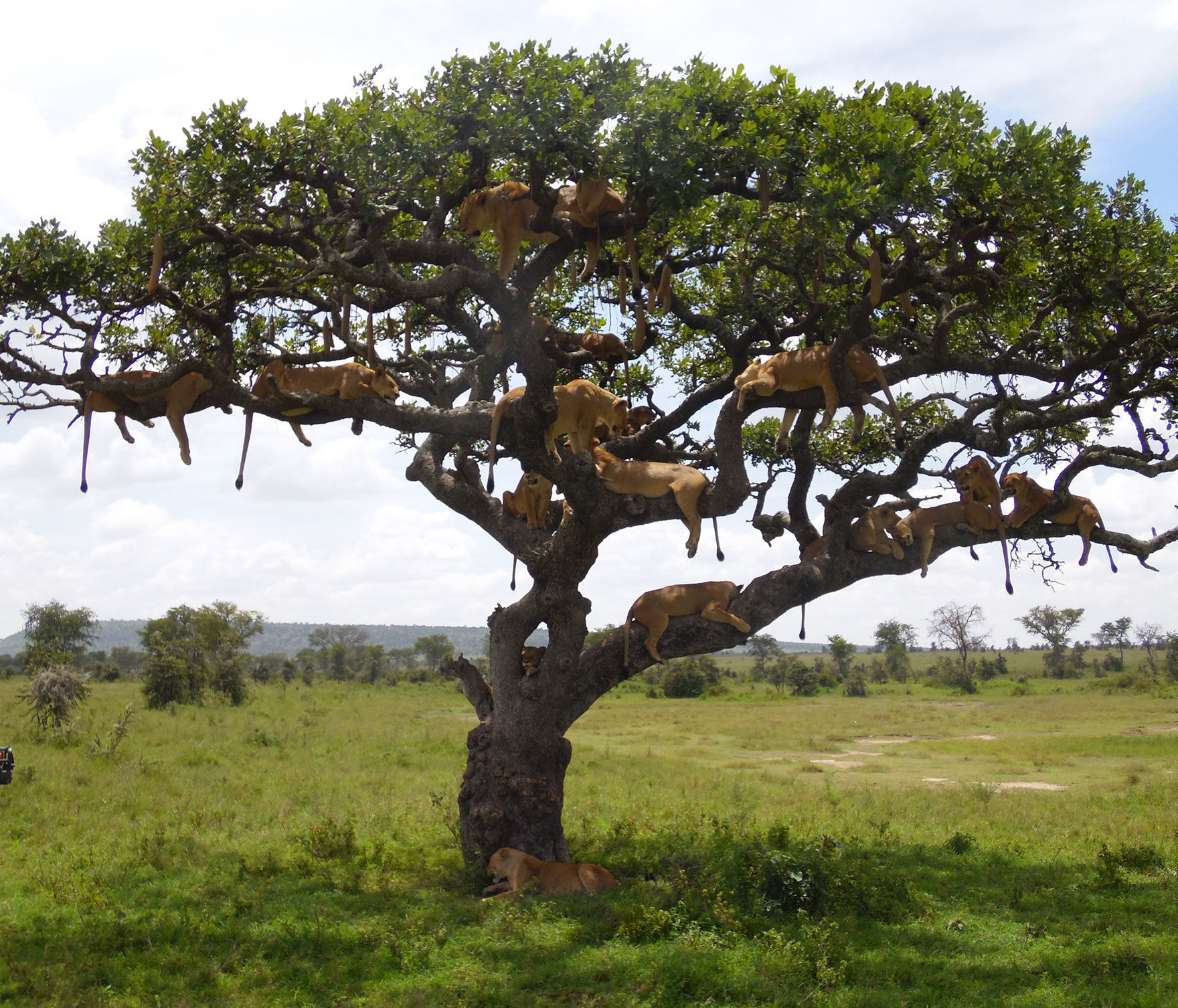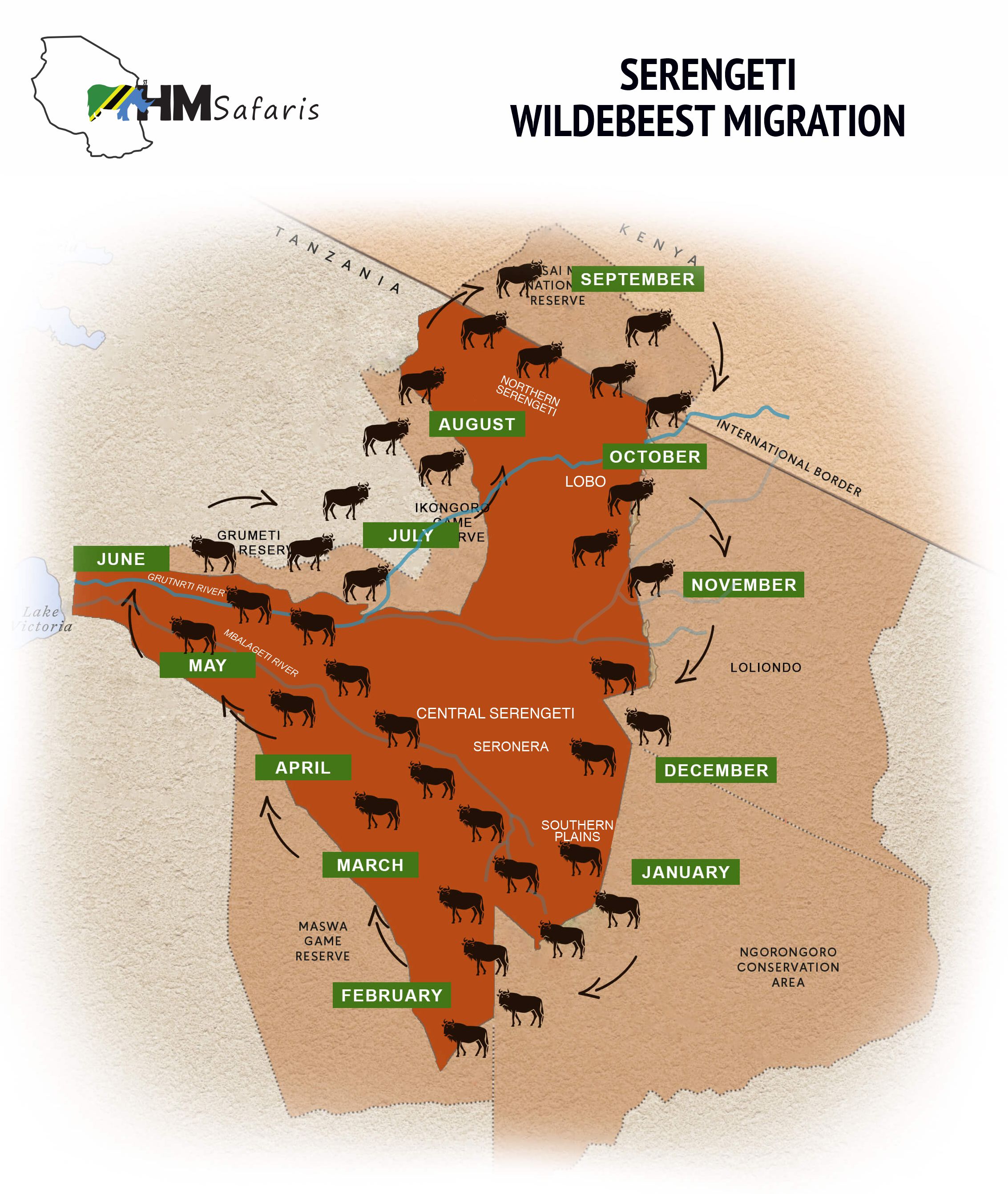
"A Serengeti safari is ideal for witnessing the Great Wildebeest Migration!."
The Serengeti National Park was established in 1951 and is Tanzania’s oldest national park. Serengeti is the Masai word for ‘endless plain’ and it certainly seems endless! It is approximately 14,763 km2 (5700 square miles) and the altitude varies between 1000 to 1900 m (3280 to 6234 ft) above sea level. The name Serengeti comes from the Masai tribe who had been using the land as a grazing area for their livestock for more than 200 years before the establishment of the national park. The Serengeti is nearly ten times larger than its contiguous park in Kenya – Masai Mara National Reserve – yet it receives far fewer visitors each year, per square kilometer or square mile. Here you will find all big five: Buffalo, elephant, leopard, Lion and rhino. With an estimated 2 milLion Wildebeest, 250,000 Zebra and 450,000 Thomson’s Gazelles there is also an excellent chance to see a chase and, if you’re lucky, even a kill.


A top attraction of the Serengeti is the annual migration of the white-bearded Wildebeest. To witness the migration of milLions of herbivores is truly must-see experience! The Wildebeest migration is a circuit that follows the annual rainfall around the Serengeti in a clockwise fashion. Even when they head up into Kenya for a few weeks in September and / or October, there is nearly always a good time to see the migration. Because the migration does vary slightly year from year, the map below is only a rough guideline of where the migration will be. When you book your safari we will have data from our camps that will help us put you in the best location possible to view the Wildebeest action.

The Northern part of the Serengeti (Kogatende) along the Mara River epitomizes Africa’s magic. It is definitely one of the world's most famous Safari areas and blessed with a great biodiversity and wildlife.
The Mara River is particularly known for its spectacular and sometimes dramatic scenes that take place between June and October, when milLions of Wildebeests go across the river trying to survive the river stream and the attacks of Crocodiles.
The River carries water all year round and is also frequented by Elephants and a lot of Hippos. The Great Plains give an excellent chance of close encounters with rhinoceros and Cheetah hunting Gazelles
The central region has adequate water year round, with the main trees being: Fig Trees, Sausage Trees and Yellow fever acacia Trees. Candelabra Trees, Desert Date Trees and Umbrella thorn acacias are also found in the open plains, valleys and hills.
At the heart of the Serengeti is the lovely Seronera Valley. A crisscross of rivers can be found in the grassy plains of the Seronera and there will most certainly be ample herbivores about. This is the region that attracts the most visitors. This is mainly because there are always large numbers of animals in this region due to the permanent water supply. The migration also passes through here a few times during the year, depending on whether they are heading south from Kenya or north and west.
The valley is known as the Big Cat Capital of Africa. There is simply no better place in Africa to observe large carnivores in action. Exceptional encounters occur all year round and it is not unusual to come across all four large predators (Lion, Hyena, Leopard and Cheetah) besides a plethora of other wildlife and birds during the course of a day.
The central Serengeti is an excellent spot year-round for safaris. There are always resident animals in the area, and due to its prime location we can easily get out in the bush to where people are less like to venture. We always incorporate a few days here for those who have the time and wish to get away from the crowds.
This area has more open plains dominated by Umbrella thorn acacias—Acacia tortilis. The Wildebeest will start to drop their young towards the end of January here. This also means that a fair number of predators are about, including: Lions, Jackals, Cheetahs and Hyenas. January through March is also the best time to see the Wildebeest migration here. The weather is more pronounced in the south east, with the dry season being particular harsh. The long rains start in March and continue through the end of May. During this time the plains are sprinkled with pink and white ink flowers. This is also an excellent time to see a high concentration of herbivores as they are particularly fond of grass that thrives in the nutrient-rich soils here.
Other animals to be found in the Serengeti include: Baboons, Cheetahs, Crocodiles, Dik Dik, Dung beetles, Elands, Genet cats, Giraffe, Guinea fowl, Hippos, Hyenas, Impala, Lovebirds, Olive baboons, Ostriches, Rock hyraxes, Serval cats, Topis, Vervet monkeys, Vultures and Warthogs.
Western Serengeti is recommended in May through early August for Wildebeest migration viewing.
The open plains of the western Serengeti are dotted with bush-clump thickets. There are also lots of acacia, whistling thorn acacia trees and Desert Date Trees. The fabled Grumeti River runs through this region and along its banks you can often find trees like: Tamarind, fig, acacia and many shrubs.
The western regions are not frequented as much as those of central and eastern Serengeti. May through the start of August is the time to view the annual migration of Zebra and Wildebeest. This is also the rut season for Wildebeest and the plains are noisy with male Wildebeest defending their temporary territories. The migration must also forge the Grumeti River, which is a spectacle to behold. The river is teeming with Nile Crocodiles – the largest crocodile in the world. During the dry season, when the migration has long gone, there have been reported sightings of Lions resorting to attacking Crocodiles for food. Apparently one sighting reported seeing a hunt consisting of about five female Lions (the main hunters of the pride) against one crocodile. In the end the crocodile managed to escape back into the river.
Due to the sheer size of the Serengeti the landscape varies from north to south and east to west. The region we select for your Serengeti safari depends largely on the time of year you wish to visit Tanzania. We’ll always take you to where the wildlife action is, which naturally includes the great Wildebeest migration – a must see for any visitor to Tanzania! However, there are many other less visited areas in the Serengeti that are home to large numbers of resident wildlife. We’ll also explore some of these areas and get you off the beaten path to experience the tranquil solitude that the mighty Serengeti offers.